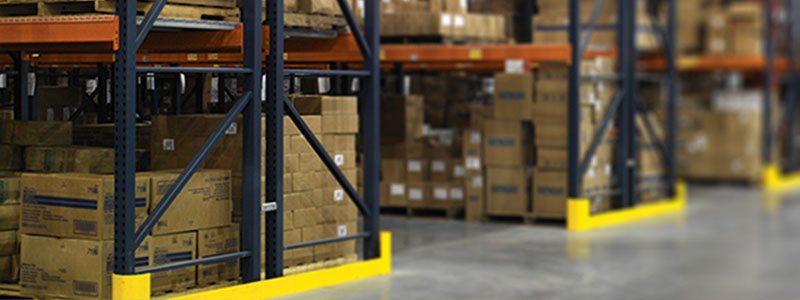
In a fast-paced moving environment, forklifts and racking are going to make contact. Lift trucks can take out a rack, bend columns and wreak general havoc. You can repair it as it happens or you take steps to prevent it. The best plan is to prevent what you can by addressing in your initial rack design, and be prepared to make repairs when necessary.
To help eliminate the risk of damage, make sure that the aisles are wide enough for the material handling equipment being used, and invest in structural guards, boxed front columns, rub rails, bull-noses and column guards. While this won’t prevent everything, it will minimize damage and the chance of expensive repairs.
In a more slow-to-medium paced environment, preventative measures look a little different as the risk is less. Using roll form products is acceptable with a good plan and policy enforcement. Start with a good design by someone who specializes in pallet rack systems that meets your specific needs.
Once again, make sure your aisles are wide enough. Whatever the manufacturer minimum is, add twelve inches. Ensure that the uprights are the correct depth and the beams are long enough and provide the right capacity. You will need a detailed and accurate inventory for this, as width, depth, height and weight, plus pallet type, are key components to this decision.
Add column guards and strength enhancing beams where it makes sense, especially at intersections, and don’t be afraid to use post strengtheners and bull nose. The key is to prevent damage and if it can’t be prevented, to have as small an impact as possible.
Finally, no matter the type of environment you have in your warehouse, develop processes and policies to properly train your operators. Enforce daily lift truck inspections, weekly rack inspections and insist all impacts are reported, no matter how minor. With each staff member contributing to the safety of themselves and others, it is less likely that anything of significance will occur.
Another proper step is to have an annual rack inspection performed by a local rack expert or the manufacturer of your pallet rack system. They will look for deflections on the front, lateral and cross braces, which can take an upright out of service. They will also look for broken base plates, loose anchor bolts, sheared or twisted uprights – all of which need immediate repair if discovered.
Finally, periodically review your pallet weights and rack capacities, and post those for everyone to see. If you re-organize your warehouse inventory, take those capacities into consideration. By having them posted, all employees, regardless of time with the company, will know what type of product can be placed there.
Rack damage can lead to rack failure. Forklift operators may be protected by roll cages but pedestrians are not. By ensuring that your pallet rack system is safe, secure and protected from impacts, you are ensuring the safety of your product and your personnel.


.png)

